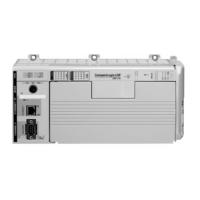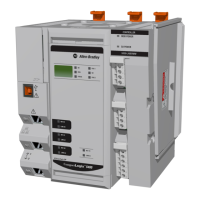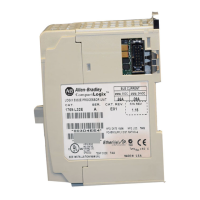Rockwell Automation Publication 1756-PM004D-EN-P - September 2012 25
Organizing Tags Chapter 2
Data Type
The following table outlines the most common data types and when to use each.
Extended Properties
You have the option to add extended properties to select tags. The extended
properties include:
• Min
• Max
• Engineering Units
• State0
• State1
When these properties are added, their values are made available for use by some
Rockwell Automation HMIs.
Extended properties for a tag are added and modified in the Tag Properties pane.
Term Definition
Data type The data type defines the type of data that a tag stores, such as a bit, integer, floating-point value,
string, and so forth.
Structure A data type that is a combination of other data types.
·A structure is formatted to create a unique data type that matches a specific need.
·Within a structure, each individual data type is called a member.
·Like tags, members have a name and data type.
·A Logix5000 controller contains a set of predefined structures (data types) for use with
specific instructions such as timers, counters, Function Blocks, and so forth.
·You can create your own structures, called a user-defined data type.
For Select
Analog device in floating-point mode REAL
Analog device in integer mode (for very fast sample rates) INT
ASCII characters String
Bit BOOL
Counter COUNTER
Digital I/O point BOOL
Floating-point number REAL
Integer (whole number) DINT
Sequencer CONTROL
Timer TIMER

